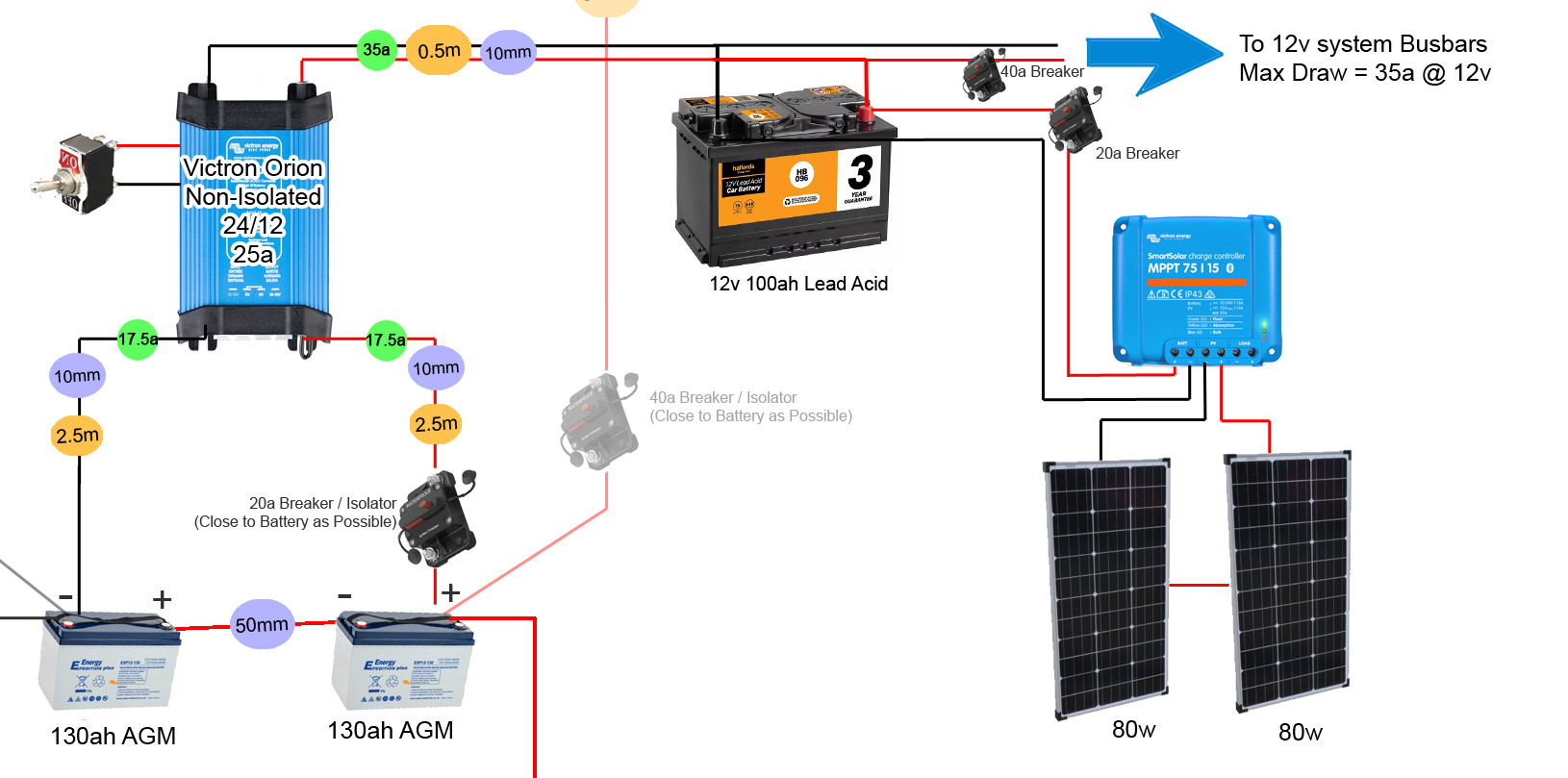Hi All,
I'm looking to order a Victron Orion 24/12 25a Converter to power 12v domestic boat electrics from 24v battery system. Few quick questions:
1. Do we know for how long the max 35a output current rating is recommended? There's a small chance my 12v draw may jump above 25a for approx. 5 mins when my 12v diesel heater startup glow plug is on (it draws 10a!)
2. Assuming it is advisable to work to a 35a max output current, I'll have a 40a fuse on the 12v output cable and 20a fuse on the 24v input cable (because 35a @ 12v = 17.5a @ 24v). Does this sound OK?
3. Or, if 25a is the strict maximum output I should plan for, would it be advisable to fit a 25a breaker to the 12v output to protect the Orion if draw does go above 25a? (it's pretty unlikely this will ever happen, as everything would need to be on, inc. horn, headlight, bilge pump, water pump etc)
Thanks

